I’d never heard of Karakalpakstan, an autonomous republic within Uzbekistan until a short while ago, but Moynaq, the former port town in its northern side, has captured the world’s attention as the epicenter of disaster tourism. This deserted town, 200 km from Nukus, the region’s capital, ranks high on the list of man-made disasters in the world.
Once upon a time in the old Soviet days, it was a popular holiday destination, with its fancy beaches and seaside restaurants bursting with fresh seafood.
Today’s Moynaq, however, is a shell of its former self. Desolate and neglected, its past glory can be seen in the decaying remains of ships in the Ship Cemetery.
Heading to the ship cemetery
I head to this destination early morning on a day trip from Khiva, which is 400 km away.
Sometime after we enter Karakalpakstan, it begins to rain. We stop for coffee at a small roadside store in the middle of a dry and scrubby landscape. Not a shade of green anywhere, but the driver tells me that colours will pop soon. I enjoy the smell of the rain on the parched land as I wait for my coffee.
As expected, coffee is not a celebrated drink here and we settle for a 3-in-1 pre-mix that owes its origin to Italy. In the rapidly falling temperature, even that is welcome.
We have a hundred kilometres to go.
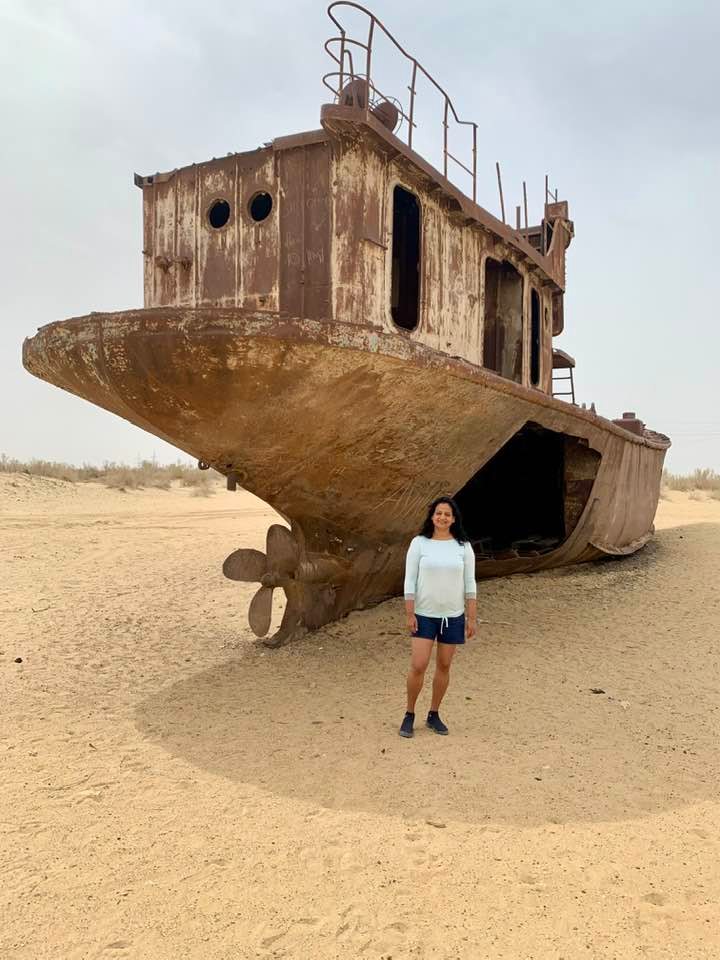
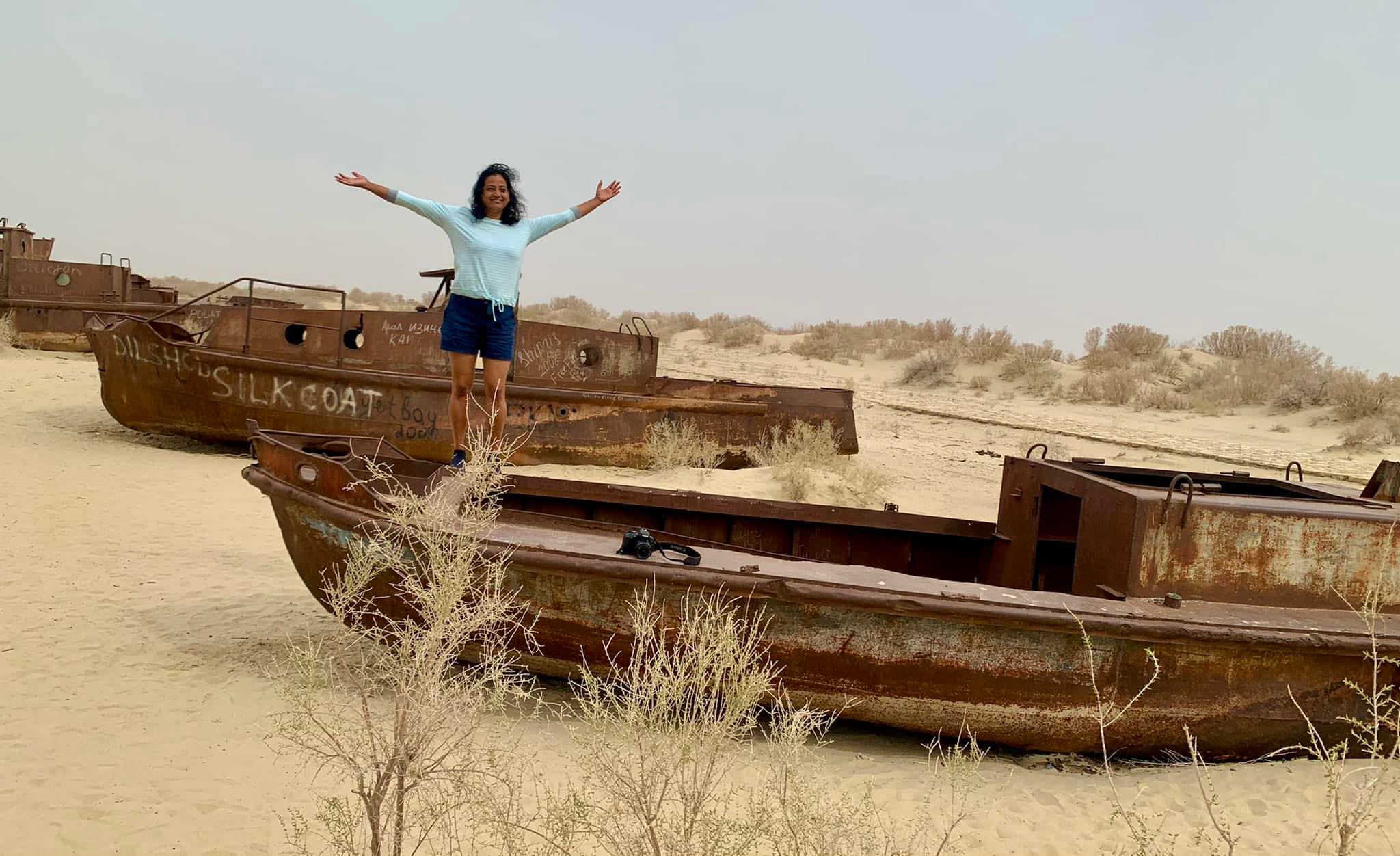
How Moynaq turned into a desert town
A newly-constructed tawdry, sail-shaped tower flanked by a bumpy road and a vast expanse of desert welcome me to Moynaq. The dust has settled, thanks to the rain, but the water ponds make driving challenging. The only other road surprise comes in the form of herds of sheep and cows. A teaser of what is to come.
This region is largely ignored by the Uzbek government and left to its own fate, it is struggling to survive. The town of Moynaq is dotted with skeletal remains of fish canneries and shipping industries but every now and then, it is heartening to see newer buildings emerging from the sand. The driver reminds me that we are driving on what was once the Aral Sea.
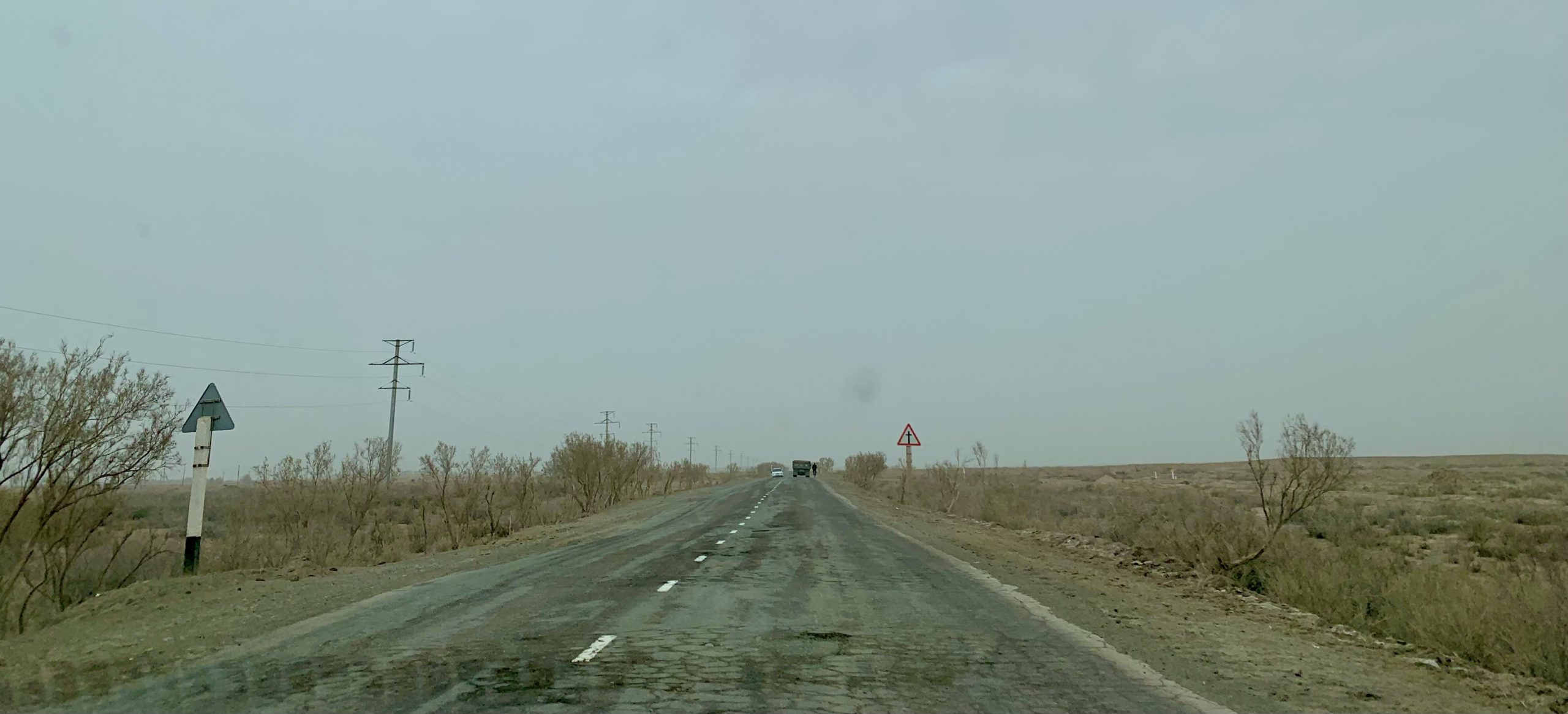
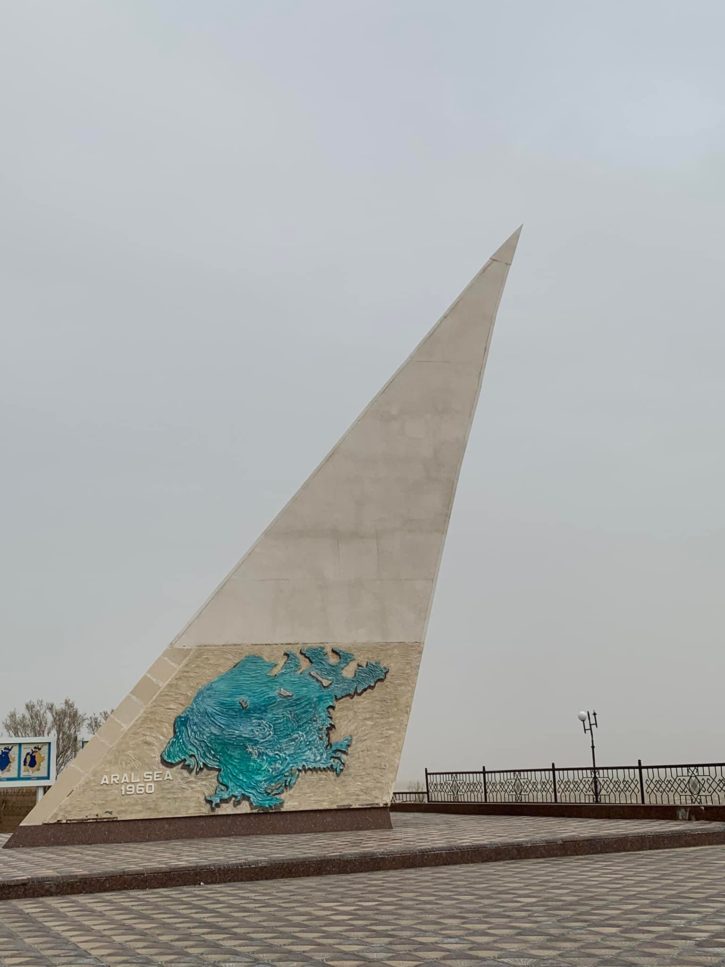
It is impossible to picture Moynaq as a busy 1960s Soviet fishing port on the Aral Sea — one of the four largest lakes in the world measuring 68,000 square kilometres — employing over 40,000 people in its fishing industry. Six decades ago, two rivers Amu Darya (Uzbekistan) and Sya Darya (Kazakhstan) drained into this inland sea and kept the fish biting. When the Soviet changed its focus to cotton growing, the rivers were diverted for irrigation and the sea died.
Moynaq’s fishermen followed the lake’s shrinking shores, but eventually the lake disappeared, and its salinity levels shot up. The fish died and a town that relied on fishing died along with it.
Beyond Moynaq, deserted fishing villages and old tombs in the wastelands mark the death of the future as much as the death of the past.
There is no other place in Central Asia where the Aral Sea disaster has impacted its people more than in Moynaq. This town might not necessarily tick the box for its beauty or landscape and its appeal remains largely debated among travellers, but it is still worth travelling this far to witness the scale of environmental disaster.
The ship cemetery
We drive through the town marvelling at its determination to survive. A bazaar is in full swing, enlivening the dull morning while somsa (a local snack) sellers call out their wares. At 2000 Som a piece, these savoury pastries are a welcome buy.
When we arrive at the ship cemetery, the only other visitors there are school children on a day trip from Nukus, scrambling down towards the cemetery of dead ships.
I linger on to watch a 20-minute film at the museum before getting down to the cemetery. For 25,000 Som (about USD 2), I watch the sad-but-emphatic story of Aral Sea and Moynaq — starting with its turtle meat and fishery production, thriving fishing canning plant and ending with the cotton fever and the resulting disaster. The small museum has paintings and photographs of the town in its more prosperous days.
The exhibits demonstrate the wealth and importance of the place fuelled by fishing and other smaller industries. The town clearly had an interesting past, but the movie somehow deepens the misery.
The rain hasn’t made it this far and it is getting warmer. Dust and sand swirl through the air. I climb the lighthouse for an overview, squinting in the light over the white desert, hoping to catch a glimpse of the Aral Sea. But no matter how high I go it is impossible to catch a glimpse. Below me, glinting in the sunlight and slowly sinking into the sands are the last rusting remains of ships of the Aral Sea.
This is what I have come to see.
The Ship Graveyard
The ‘ship graveyard’ is not exactly what I had imagined a shipwreck to be. The ships of varying sizes displayed below the lighthouse have been dragged from where they were marooned on the seafloor miles away and lined up like tombstones to make it easier for tourists who make it this far to see them.
Suddenly, the realisation that these stranded ships are now 200 kilometres from the shores of the Aral Sea hits me.
Behind them, the desert, which was once a sea, stretches on endlessly. Miles of sand with dry bushes and seashells, however, make for an interesting sight. There is beauty in desolation, after all.
From where I am positioned, I can see children excitedly crawling in and out of the ship carcass. Soon, I descend into the cemetery to join them in their exploration of the ships. To my left are 10 decaying ships and to my right, further away, are three others, more abandoned than the rest, waiting for life to breeze through it.
Once upon a time not long ago, they sailed the Aral Sea, greeting each other on their way to a good catch, proud of the prosperity they brought. But today they are proof of an experiment gone wrong. Abandoned and uncared for, left to the mercy of nature and visited only by a few hundred tourists making the long journey, they are waiting to crumble into the dry seabed with its white sands that is a health hazard for the local population.
Two hundred kilometers away what is left of the Aral Sea in Uzbekistan continues to perish.
Unaware of the past, children look for seashells and pose for photos. I find a piece of glass along with small shells while resisting the temptation to grab a piece of the rusting ship for keepsake.
But the journey to this remote area of Uzbekistan is not without its share of surprises. Changes are afoot. And as if to make up for its ill-repute, Moynaq has established itself as Central Asia’s biggest location for an electronic music festival called Stihia. Since its inception in 2018, this music festival held in the ship graveyard hopes to live up to its name that translates to unstoppable force of nature.
Its reference to the Aral Sea environmental disaster, combined with the power of music to bring people together, is what Moynaq needs to bring back its glory.

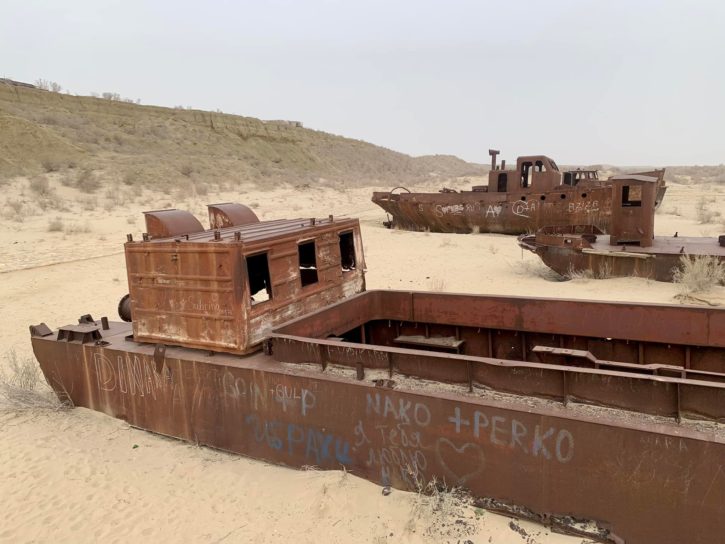


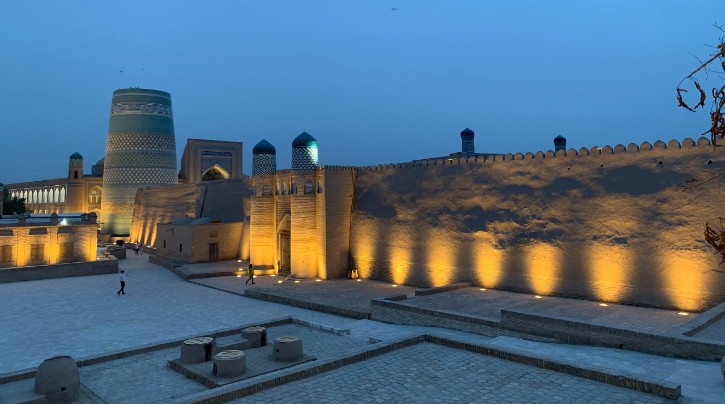
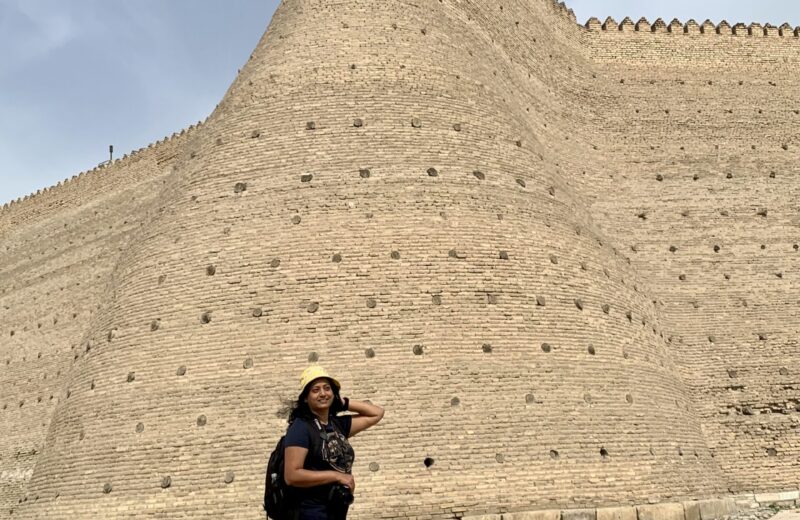
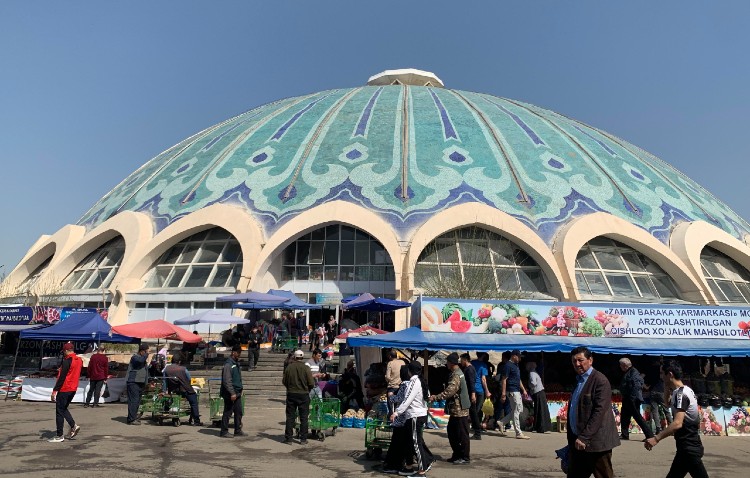
An interesting but depressing history of Moynaq – the extent of the man-made ecological damage is overwhelming.
It is indeed. There are talks about reviving Aral Sea but much of the town and the roads around are built on what was once the sea. With environmental issues, there is usually no going back – sad but true.
Amazing travelogue!
Thanks a lot 🌹